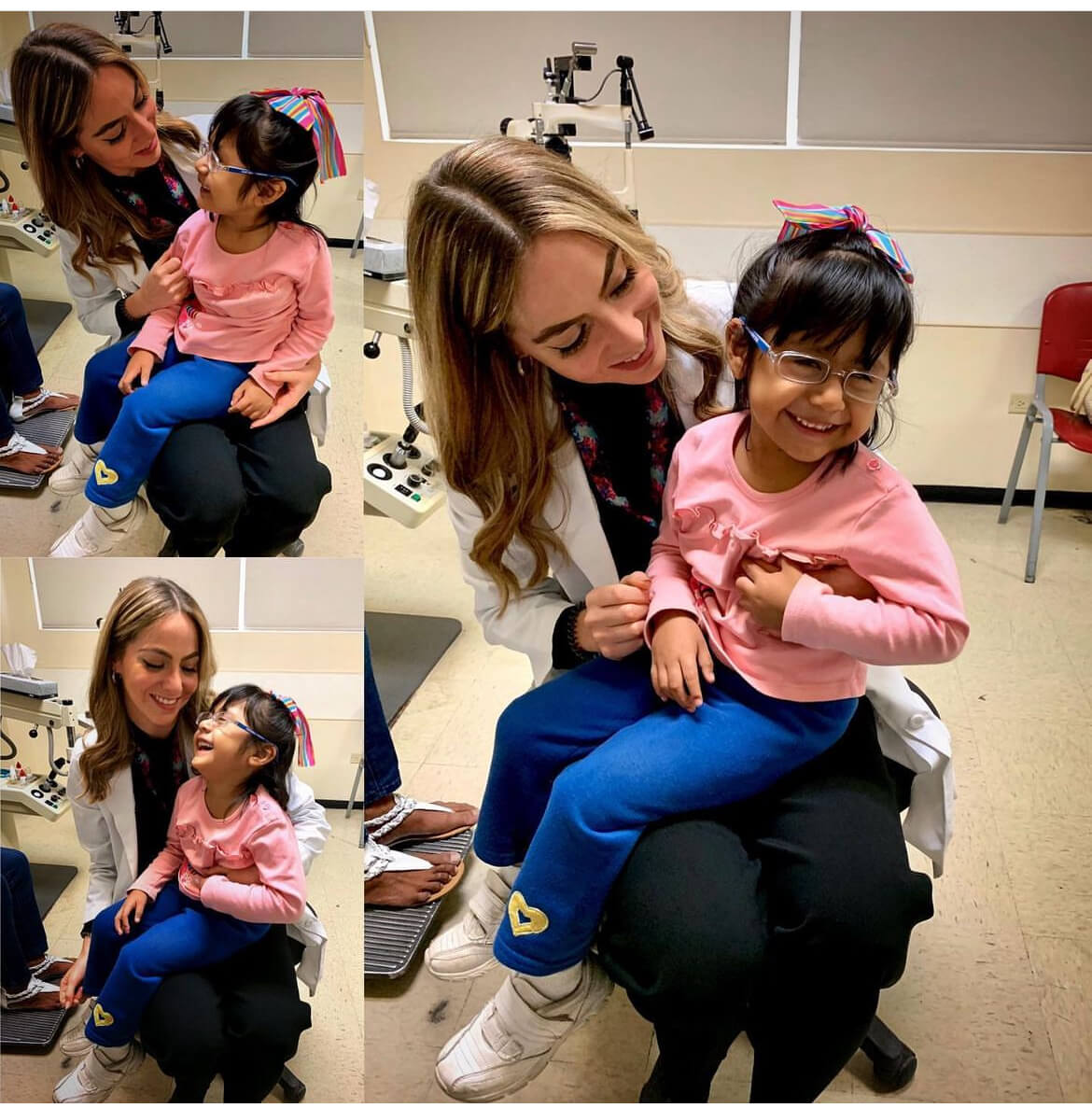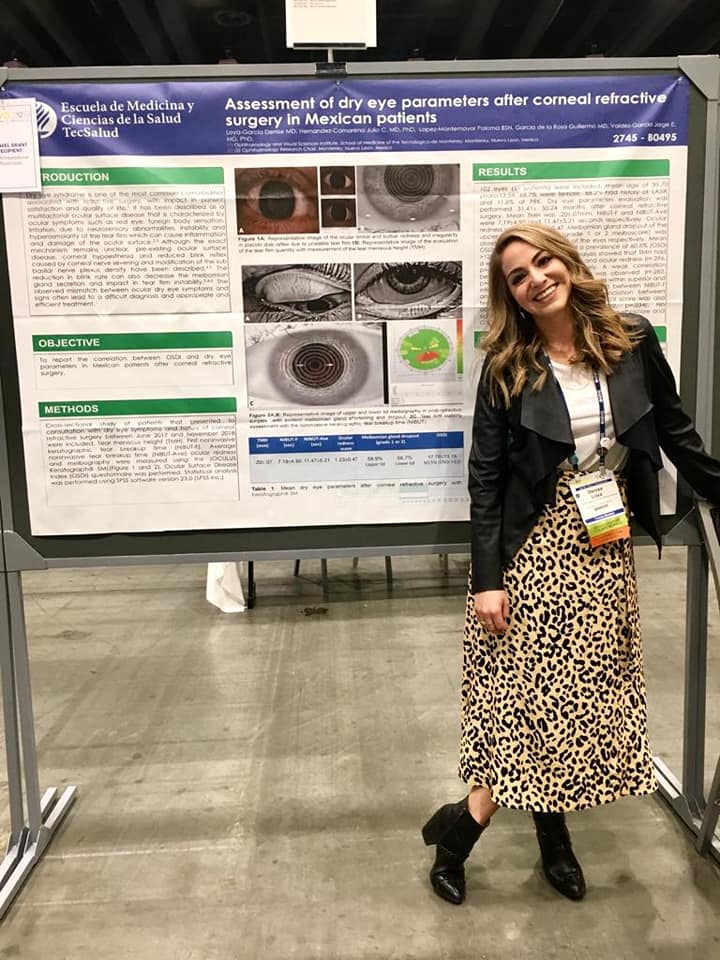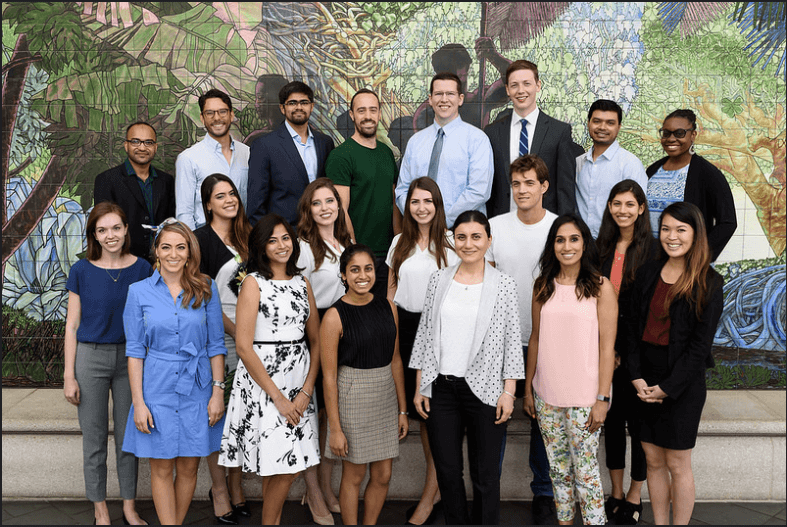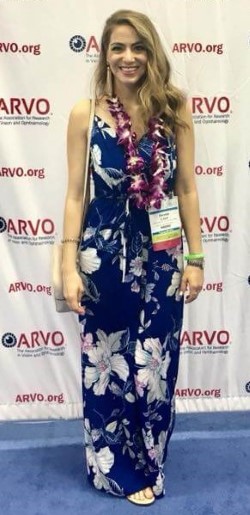Spotlight on members
Catching up with Denise Loya-García, MD, PhD
Denise Loya-García, MD, PhD, is a cornea, refractive surgery and external disease specialist. She is also an eye bank coordinator at the Eye Bank Institute of Ophthalmology of the Conde de Valenciana Foundation, ABC Santa Fe, and an assistant professor of cornea and refractive surgery at the Institute of Ophthalmology, Conde de Valenciana Foundation.
Certified by the Mexican Council of Ophthalmology, she is an active member of multiple international and national associations, including the México Colegio Nacional de Investigación en Ciencias Visuales (MARVO) for which she will serve as secretary next year. She is also the Mexican delegate for the Pan-American Association of Ophthalmology Young Ophthalmologists (PAAO-YO), has participated in global symposiums, and has authored/co-authored many scientific paper publications.
Loya-García has presented at ARVO Annual Meetings since she started attending in 2015. She recently shared with ARVONews tips on writing a successful abstract, presenting your research, taking advantage of travel grants and using your time effectively during the Meeting.
Tell us a little about yourself and your background.
I’m originally from Mexico. I’m the first daughter of two great parents who inspired me to pursue a career in medicine. My dad is an anesthesiologist and my mom is a nurse. Patient care has always been an important value in my family.
What are some of your interests?
Some of my main interests include clinical and research work but teaching and mentoring have also become very important in my life. I believe that having hobbies, like dancing and painting, is essential for maintaining a balanced life.
 Why did you enter the eye and vision field, and what got you interested in research?
Why did you enter the eye and vision field, and what got you interested in research?
I initially saw ophthalmology as the perfect blend of precise, elegant surgery and meaningful doctor-patient relationships. I also encountered the frustration of cases where we couldn’t fully help our patients, and I felt a pressing need for better solutions. This realization led me to research, where I began seeking answers and soon, I fell in love with the fascinating world of vision research.
Writing a successful abstract
When did you start attending the ARVO Annual Meeting and submitting abstracts?
I started in 2015. I submitted an abstract and have had the opportunity to be accepted and present my work ever since.
What do you think makes your abstracts stand out?
I believe that alternating between clinical and basic science research has allowed me to navigate two fascinating worlds, giving me a broader understanding of the challenges we face in ophthalmology—particularly in the fields of the cornea and ocular surface.
What advice would you give abstract submitters, particularly first-timers, to help increase their chances of acceptance?
Be passionate about your work and mindful of its relevance. Pay careful attention to methodology, focus on the most significant results, and always include an abstract in layman's terms.
Travel grant benefits
From your experience, why should researchers not hesitate to apply for a travel grant when they submit an abstract?
Coming from a developing country, these travel grants make a real difference, especially when you're in training or at the early stages of your career, as I was. From the moment I began submitting abstracts, I applied for a travel grant every time, until I finally had the opportunity to receive one.
The grant not only helps with expenses but also provides the opportunity to meet others who received it, allowing you to share experiences, discuss your work, and build new friendships.
Presenting your research

What was the experience like the first time you presented at an ARVO Annual Meeting?
The first time I presented, I was very nervous. It was overwhelming, with so many people and posters, and knowing that prominent scientists were there. Explaining my research in a language that wasn’t my native one added to the pressure. At first, I didn’t know what to expect, but as the day went on, I realized that everyone who stopped by to view my poster, ask questions, or provide feedback did so with the best of intentions. I came to understand that the Meeting was truly about science and the greater good.
What tips would you give for effectively presenting your work at an Annual Meeting?
Practice! As they say, practice makes perfect. Whether you’re presenting a poster or giving an oral presentation, preparation is everything. Pay attention to your posture, tone of voice, and make sure to maintain eye contact. If you’re presenting a poster, aim to make it visually appealing and easy for the audience to find key information; this will help them navigate through it more easily. Don’t be afraid to use color and images—sometimes, an image is worth a thousand words and can communicate effectively. Most importantly, be approachable and include newcomers in the discussion.
How do you make use of feedback on your presentations and make the most out of these opportunities?
I try not to take feedback personally. I always appreciate it, then analyze it objectively and use it as an opportunity for improvement.
I believe it was during my second poster presentation at ARVO when the scientist whose work I had based my research on approached me. He began asking about my project and offered invaluable feedback, along with some insightful advice on how to continue. It was incredibly inspiring to have someone whose work I had studied extensively be so kind and humble, engaging in a one-on-one discussion and encouraging me to pursue the work I was doing.
Benefits of attending an ARVO Annual Meeting

How has attending ARVO Annual Meetings contributed to your professional and/or personal growth?
ARVO has given me the platform to share the work we’re doing at our institution and in our country. It has opened doors for collaboration between institutions, allowed me to reconnect with friends, and helped me forge new relationships with scientists and others in the vision field worldwide.
What opportunities should early-career researchers take advantage of while attending an Annual Meeting?
I recommend downloading the ARVO app, which has been continually improved, and the latest version is truly fantastic—I love it! You can scroll through the program in advance, schedule the presentations or posters that interest you most, and plan for a more organized, time-effective meeting experience. ARVO also has a blog with valuable information specifically for first-time Annual Meeting attendees, which you can review beforehand. Additionally, the social events provide a wonderful opportunity to meet new people, enjoy yourself, and create valuable networking connections after the Annual Meeting.
Any recommendations on ARVO opportunities available after the Annual Meeting that can help your professional development?
I highly recommend the Science Communication Training Fellowship (Editor's note: Loya-García is an alum of the Class of 2018). Effective communication tools are increasingly recognized as essential skills for every professional. As medical researchers, we understand that the value of research lies not only in the ideas themselves but also in the ability to communicate them effectively. Take advantage of this opportunity to learn how to convey your science clearly across various channels, from a tweet to a peer-reviewed scientific article. Additionally, there are early-career mentorship programs for junior researchers focused on professional development, a Women’s Leadership Development Program for early- to mid-career women scientists, and a drop-in mentoring program typically offered during the Annual Meeting.

Any final comments or words of advice?
ARVO is one of the largest eye and vision research organizations in the world and one of my favorite meetings. It provides a platform to share research from our country and to learn from others. This meeting is truly centered on science, inspiring me each time to continue our work, innovate, and foster collaboration in the field of vision—all for the greater good of our patients.


